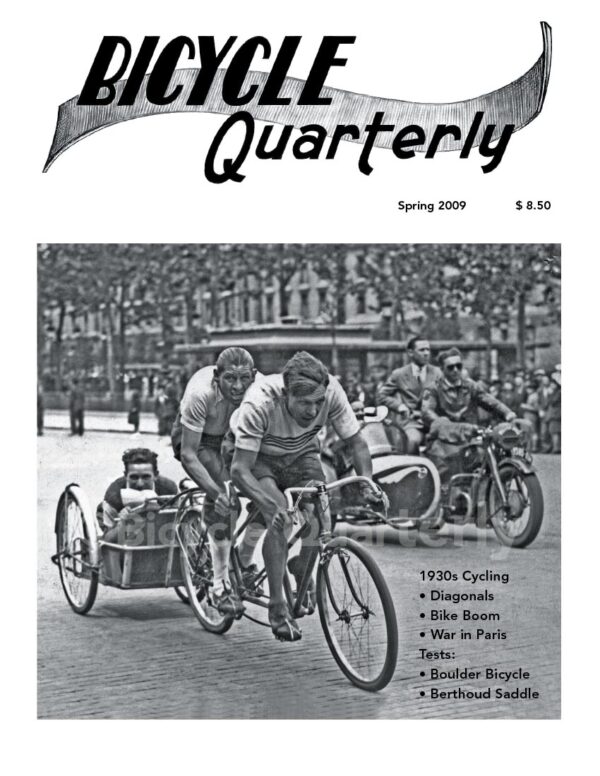
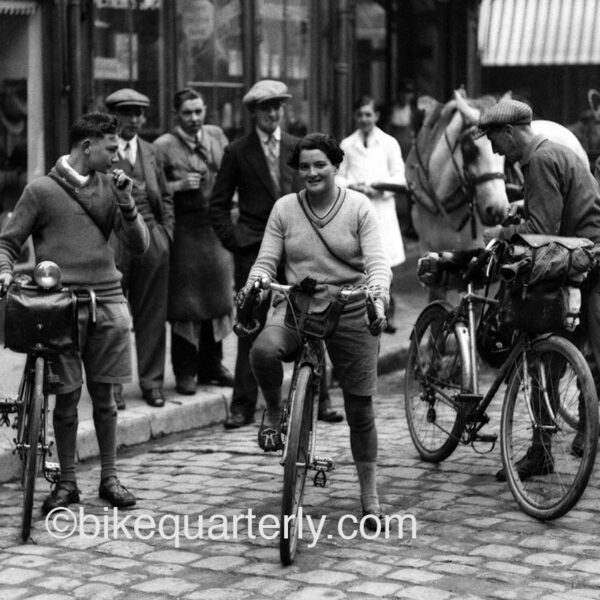
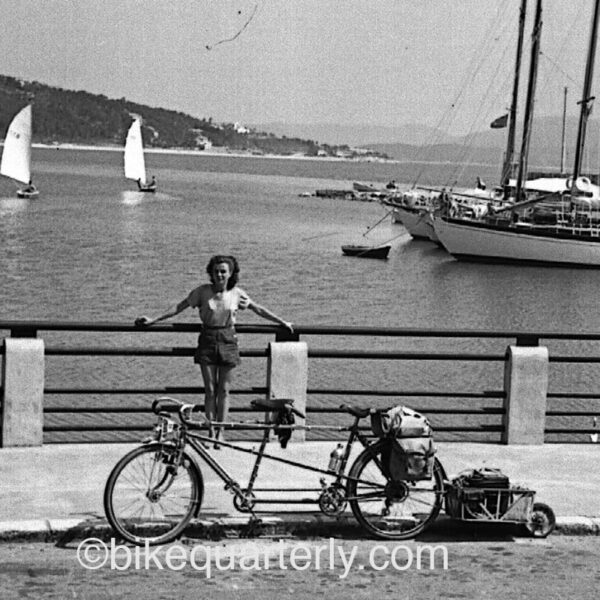
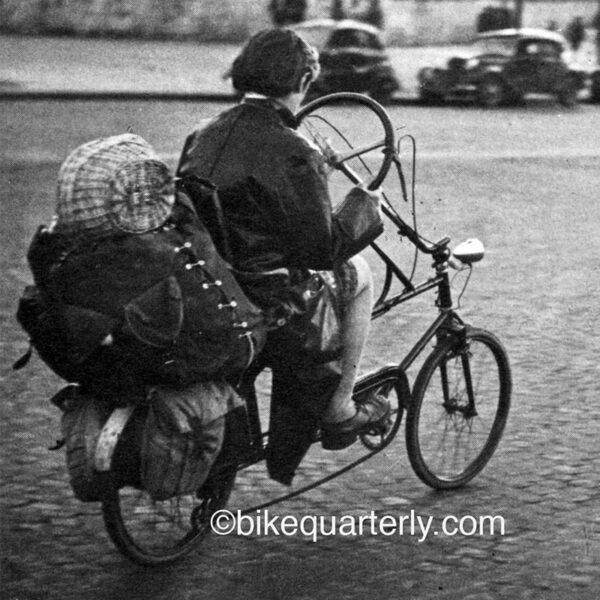
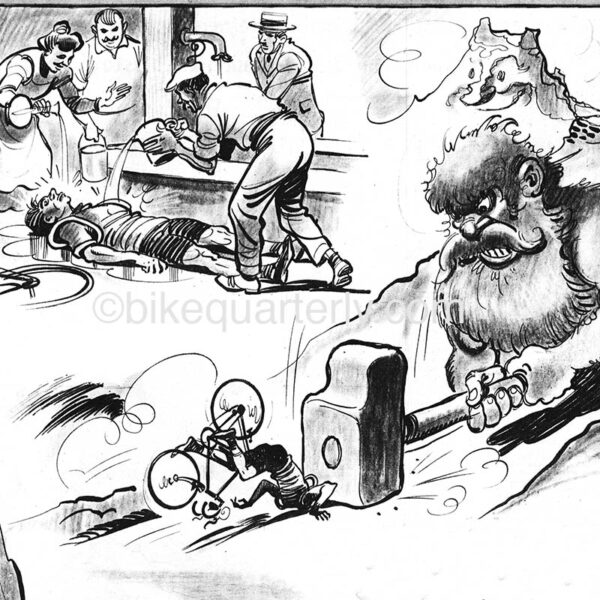
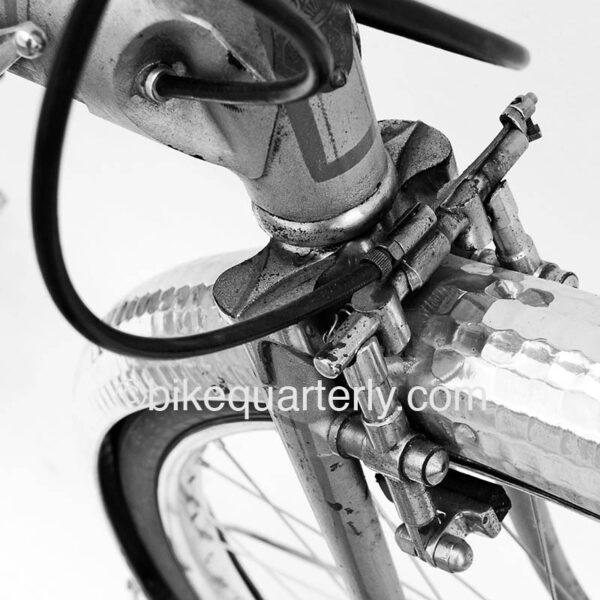
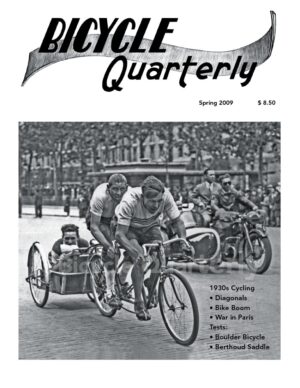
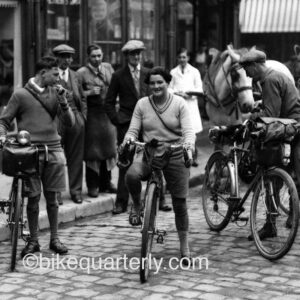
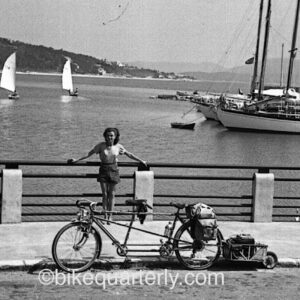
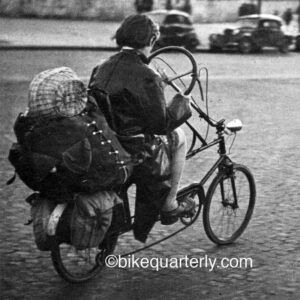
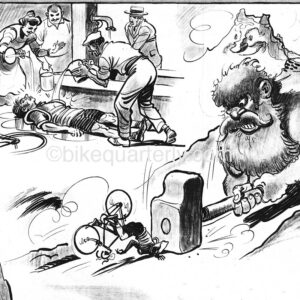
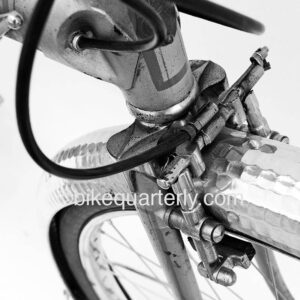
BQ 27 (Spring 2009)
$9.75
Vol. 7, No. 3
French Cycling in the 1930s
No decade saw so many technical, societal and cultural changes in cycling as the 1930s, and nowhere more than in France. Read Philippe Marre’s impression of meeting Vélocio, the famous “apostle of cyclotouring” for the first time. Marre wrote: “I tasted the simple and powerful joy of having joined a new world.” Marre was a member of the Groupe Montagnard Parisien (GMP), and Raymond Henry details the history of this illustrious group. The GMP inaugurated the French Diagonals, rides from one corner of the country to another. Domique Désir outlines the history of these famous rides, and we translated a report from the very first Diagonal in 1930, illustrated with previously unpublished photos from Raymond Henry’s archives. The GMP also organized the first Technical Trials, and we have another look at these famous events, with historic photos of two winning bikes of the 1930s: A 1936 Reyhand weighing just 22 pounds fully equipped, and the very first aluminum Barra from the same year, which weighed just 21.25 pounds despite being a tall (60 cm) frame.
Cyclotouring really took off in 1936, when the Popular Front won the general election and every French worker was guaranteed a weekend without work and two weeks of paid vacation. With a desire to travel and little money, cycling was a natural way to see the country. Tens of thousands took to the road, often on tandems with a child seat attached to the rear top tube. Even World War II could not end France’s infatuation with the bicycle, and we reprint a German propaganda piece that looks with bemusement on the Paris cycling culture, but in retrospect makes the occupied French look way ahead of their time.
We test the first Boulder Bicycle, and compare it to a 1960 René Herse Fédéral, the low-cost version that was used by the young riders of Clifford Graves’ famous European tours. We find that back then, less money still meant beautiful workmanship, but less performance, whereas today, the performance is almost the same as of a top-of-the-line machine, but aesthetic compromises are inevitable at a lower price point. Finally, the Randonneuring Basics series explains how to eat during a long ride to avoid the infamous “Man with the Hammer”, as the French call the Bonk.


